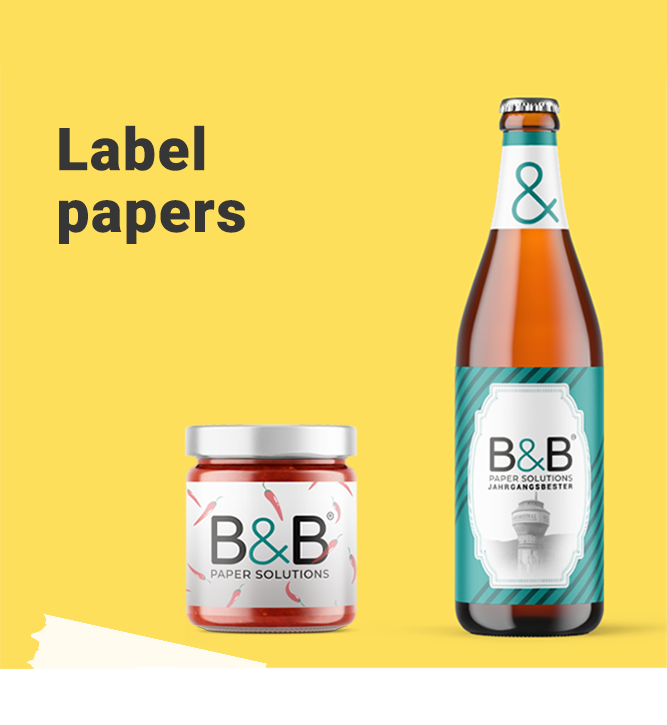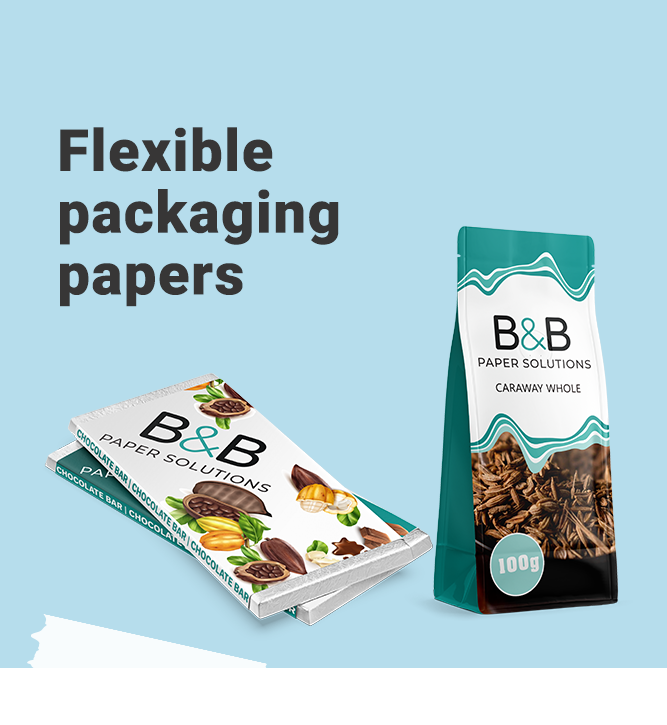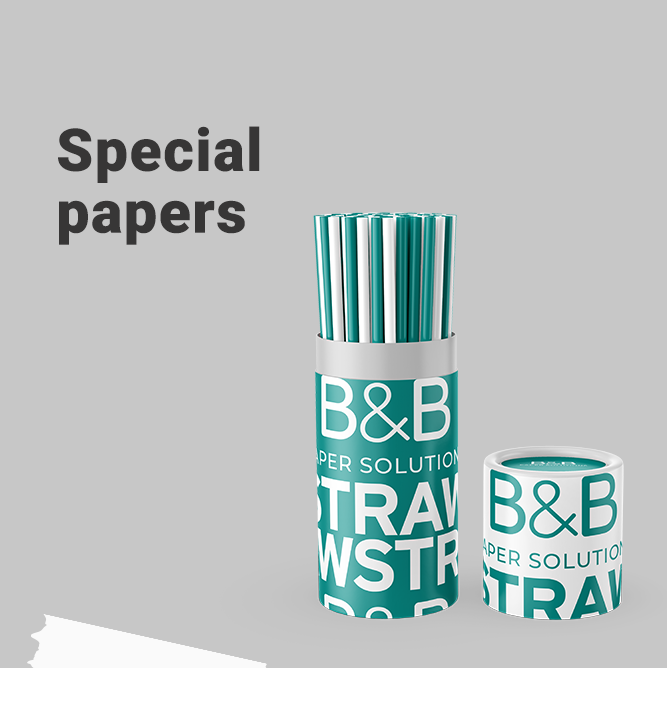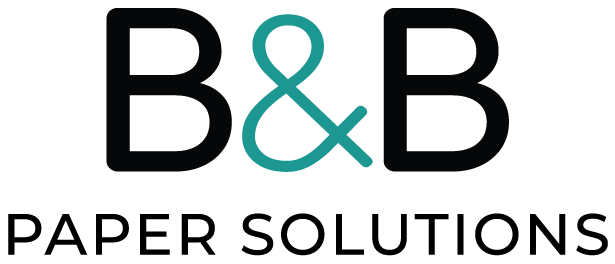Glossary and abbreviations
Technology & energy
Additives: Additives are technical auxiliaries used in papermaking, such as sizing agents, binders, pigments, etc. They give the paper its specific properties, such as whiteness and wet-strength.
Bone dry: Descriptive term for the moisture-free conditions of pulp and paper. Usually determined by drying a known sample to a constant weight in a completely dry atmosphere at a temperature of 100°C to 105°C. Also called oven dry.
Coating machine: The coating machine processes the base paper of the paper machine either inline or offline. During the coating process, various materials are applied to the raw paper in the form of an aqueous dispersion (coating color) to optimize the surface. The coating color usually consists of a mixture of pigments, binders and other additives.
Doctor roller / roll doctor: The paper rolls that have already been reduced on the winder are processed on the so-called doctor roller or roll doctor into further rolls that are ready for processing. Possible imperfections in the paper are removed and the rolls are made up ready for sale.
Drying hood: The drying hood is a part of the paper machine and/or coating machine and serves to dry the paper after pressing or coating so that it can be further processed.
Embossing calender: An assembly in which a steel roll with a specific structure and a counter roll are used to transfer this structure to the paper surface. This can influence the optical properties of the paper surface.
Embossing variants: Different structures applied to the paper surface, on an industrial scale, using embossing calenders.
Fiber sludge: The fibers obtained by chemical pulping (pulp) or mechanical pulping (wood pulp) are referred to as fibrous material. A distinction is made between primary fibers, which are obtained directly from plant material, mostly from the raw material wood and secondary fibers, which are fibers obtained from either pre-consumer waste or post-consumer waste (waste paper) are referred to as secondary fibers.
Finished paper: Several processes are passed through in the paper process. First, the paper is made on the paper machine (base paper), followed by post-processing steps, depending on the type of paper. For example, the application of coating colors on a coating machine (inline or offline), calendering on a calender and cutting follows.
Finishing / equipment department: Paper production takes place in several stages. In the first phase it is the production of paper on a paper machine, in the second phase the base paper produced in this way is coated on the coating machine, which creates the final properties of the paper, then the surface smoothness is achieved by so-called calendering, also known as ‘calendering’ on the calender generated. If necessary, further refinement steps are carried out, such as embossing the surface. Finishing is generally understood to mean the entire further processing of the paper after the calender
Flatness: As a hygroscopic material, paper reacts with bowing / buckling / curling or rippling due to internal tension or climatic changes in the environment. The flatness of the paper is the property of staying flat in sheet format with as little bulging or curling as possible.
Format packaging system: Paper is weighed and packaged ready for dispatch at the format packaging system.
Loss of material: Loss of material refers to fibers that end up in the waste water as a result of process-related steps in paper production and can therefore no longer be used for the production of paper. We therefore try to keep the amount of material loss as low as possible in order to ensure resource-saving production.
Mill broke: Refers to paper that is discarded due to defects or errors in production, as it cannot be further processed into finished paper or sold. In addition, the trimmed edge is also summarized under these quantities.
Net Production: Denotes the quantity actually produced minus the quantity of mill broke. There are various bases at which point in the production this assessment base for the net production is determined. According to the Industrial Emissions Directive 2010/75/EU, for example, the amount processed by the winder less the eliminations from production is referred to as the net production amount. In contrast, the gross production quantity is the production quantity that also includes mill broke quantities.
Non-integrated paper mill: A non-integrated paper mill is a paper mill that does not produce pulp itself but buys it from third parties and processes it into finished paper.
Packaging Paper: Flexible paper used for various packaging purposes. For example, for envelopes, bags or paper sacks for dry, powdery substances or pieces. The material can be paper without a coating or paper combined with other materials as coatings. The paper packaging is not only used for protection during transport, but also has an important communication role at the “point of sale”.
Paper grades: Different types of paper that differ in composition and/or their properties.
Pulp: Fibrous material obtained from vegetable raw materials through chemical processing (pulping). Non-cellulose components (e.g. lignin) are largely dissolved out.
Rewinder: The rewinder is a unit that is directly downstream of the paper machine. The paper roll produced from the paper machine (mother roll / spool) is precisely cut at the edge and any imperfections in the paper are eliminated. This processing step is necessary to ensure that the paper web can continue to run in the subsequent production steps. In addition, the winding direction of the paper web can be reversed on the rewinder.
Sorting cross cutter: The sorting cross cutter cuts paper sheets (format) from the produced paper rolls.
Wet-strength paper: Wet-strength papers are resistant to moisture and in many cases are also resistant to alkaline substances. These properties are achieved by adding specific additives and chemicals called wet-strength agents. They are typically used in reusable systems and allow for the residue-free removal of paper labels, for example, from glass bottles. Due to the wet-strength properties, the load from paper fibers in the washing water is largely reduced and the filling process in the reusable system is optimized.
Winder: The winder is a unit that cuts smaller workable rolls from the large mother roll (tambour) for the further processing steps in paper production.
Water
AOX: Adsorbable organically bound halogens (AOX) are a measure of the amount of halogen compounds in a water sample.
BOD5: Biochemical oxygen demand refers to the oxygen uptake by microorganisms in a water sample measured over a five-day period. This results in an indirect measure for the sum of all biodegradable organic substances in the water.
COD: Chemical Oxygen Demand is a measure of the amount of oxygen required to oxidize all of the organic matter in a water sample. The result gives the content of all organic compounds that can be oxidized by a strong oxidizing agent.
Filtered substances: In the waste water treatment, settling, suspended and floating substances are separated by filtration. These substances usually lead to a visible clouding of the water and are referred to as filtered substances.
Process water: Amount of water used for paper production. This water is circulated as best as possible and contains organic and inorganic compounds that must be fed to a treatment plant before being returned to the environment (river).
Total Nitrogen: Total nitrogen is the sum of all nitrogen compounds in a water sample.
Total Phosphorus: Total phosphorus is the sum of all phosphorus compounds in a water sample.
Waste water treatment plant: In waste water treatment plants, waste water is treated by chemical, physical and mechanical processes for discharge into, for example, running water. Depending on the requirements, ingredients are removed from and/or added to the water and processed in several stages.
Waste water: Process water used, which is fed to a waste water treatment plant after being used in paper production and is no longer fed back into the production cycle.
Sustainability
Circular Economy: An alternative to a traditional linear economy (make, use, and dispose) where resources are kept in use for as long as possible and the maximum benefit is extracted from products and materials. Examples of this are reusable systems or the recycling of materials.
CO2e: CO2e is the abbreviation for “carbon dioxide equivalents”. CO2e is used to measure and compare emissions of greenhouse gases according to how much they contribute to global warming. According to the Kyoto Protocol, carbon dioxide (CO2), methane (CH4), nitrous oxide (N2O), hydrofluorocarbons (HFC), perfluorocarbons (PFC), sulphur hexafluoride (SF6) and nitrogen trifluoride (NF3) are classified as greenhouse gases. The metrics for CO2e summarize these gases and indicate how much the sum of these gases would contribute to global warming if they were carbon dioxide. The climate impact of the individual gases is taken into account in their Global Warming Potential (GWP) (e.g. methane is 28 times more potent per molecule than CO2 and therefore has a GWP of 28 CO2e).
Corporate Social Responsibility (CSR): CSR is a management concept in which companies integrate social and ecological concerns into their corporate strategy. CSR is generally understood as the way in which a company achieves a balance between economic, environmental and social performance.
Cradle-to-Cradle Certification: The C2C certification is awarded by the Cradle-to-Cradle Products Innovation Institute. The sustainability criteria of products and their ingredients are evaluated. The evaluation takes place in five levels according to basic, bronze, silver, gold and platinum for different aspects (material health, recyclability, energy consumption and use of renewable energy, water management, and social standards).
Emission factor: Emission factors indicate an average amount of greenhouse gas emissions in CO2e from an activity or materials. This factor is usually multiplied by a quantity of the material, for example, in order to assess its greenhouse effect.
End-of-Life: The term End-of-Life describes the end of the life cycle of a product. This is usually understood to mean disposal, recycling or another form of use after the product’s service life.
ESG (Environmental, Social, Governance): The abbreviation ESG is commonly used in the financial market to evaluate the sustainability performance and risks of companies. Consider environmental criteria, key figures such as the corporate carbon footprint of a business activity. Evaluate social indicators, corporate performance in the area of social responsibility, for example towards employees, and responsibility along the supply chain (e.g. through a code of conduct). Governance deals with running a business, executive compensation, audits, internal controls and business ethics.
GHG (Greenhouse Gas Protocol): The Greenhouse Gas Protocol Initiative is an initiative of companies, non-governmental organizations (NGOs), governments and other associations and organizations worldwide. The initiative aims to promote internationally recognized accounting and reporting standards for accounting for greenhouse gases (GHG) for companies. The emissions are calculated on three levels: Scope 1 emissions: direct emissions that result from the combustion of fuels at the company site. Scope 2 emissions: indirect emissions caused by the electricity consumed and purchased by the company. Scope 3 emissions: indirect emissions arising from activities in the upstream or downstream supply chain (e.g. emissions from purchased materials).
LCA (Life Cycle Assessment): A life cycle assessment evaluates the various environmental impacts of products. The environmental impacts are evaluated for a defined quantity (e.g. one kilogram of product) within a defined framework (system boundary). The ISO 14040. series of standards describes how such a life cycle assessment is to be drawn up. A comprehensive life cycle assessment evaluates various impact categories, such as the greenhouse potential (GWP – Global Warming Potential) in CO2e, the acidification potential, eutrophication potential, water consumption, land use, etc.
SDGs: The Sustainable Development Goals (SDGs) define global priorities and aspirations for sustainable development by 2030. The SDGs call for global action by governments, business and civil society to end poverty, build peace and impact, among other things to curb climate change.
Other abbreviations
AEV (Wastewater Emissions Ordinance): The Wastewater Emissions Ordinance (for pulp and paper: BGBL.II No. 62/2018) sets parameter-related limit values for waste water. The approval of a discharge into running water or a public sewage system including limit values is prescribed.
BAT (also BAT: Best Available Techniques): Within the framework of the Directive on Industrial Emissions 2010/75/EU, the exchange of information between member states, industrial associations and environmental protection organizations is pursued. Industrial activities and applied processes are described in so-called BAT (BAT) leaflets. In addition, the emissions that occur, possible emission reduction measures and more detailed information on them (conditions of use, costs of emission reduction measures, etc.) are published.
FSC (Forest Stewardship Council): The Forest Stewardship Council (FSC) is an international non-governmental organization that certifies the responsible management of forests.
HACCP: Hazard Analysis Critical Control Points (HACCP) is a system that provides the framework for monitoring the entire food system from harvest to consumption to reduce the risk of foodborne illness. The system is used as hygiene management in the manufacturing industry.
ISO 14001 (Environmental Management): Management system certified by an independent third party, which ensures that the certified company applies internationally recognized standards and procedures of environmental management.
ISO 50001 (Energy Management): Management system certified by an independent third party, which ensures that the certified company applies internationally recognized standards and practices of energy use: improving efficiency, reducing consumption and energy security.
ISO 9001 (Quality Management): Management system certified by an independent third party, which ensures that the certified company applies internationally recognized quality management standards and procedures.
ÖZEPA: The Austrian association of pulp and paper chemists and technicians forms a platform for cooperation and the exchange of experience in the pulp and paper industry. The exchange takes place in topic-specific committees and working groups.
PEFC (Program for the Endorsement of Forest Certification): PEFC is a system to ensure sustainable forest management.




